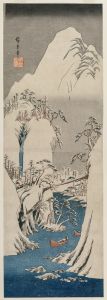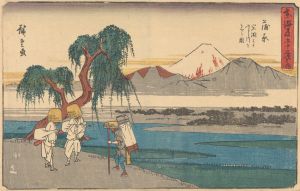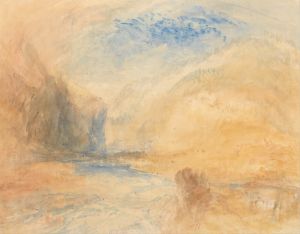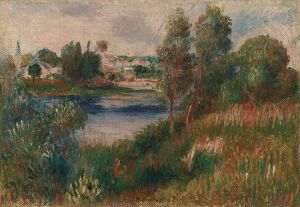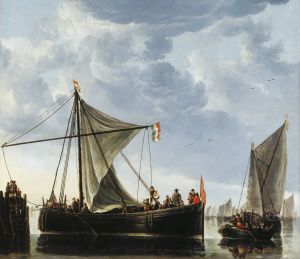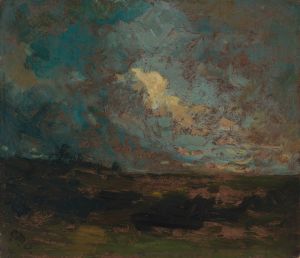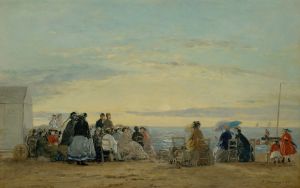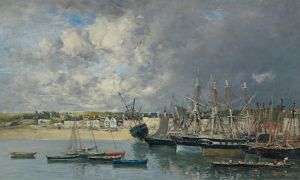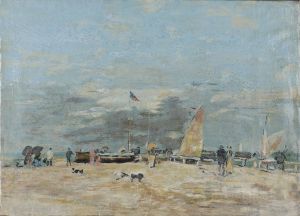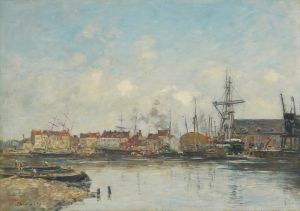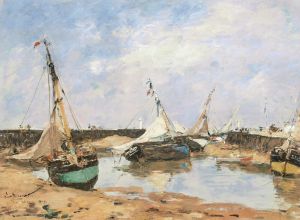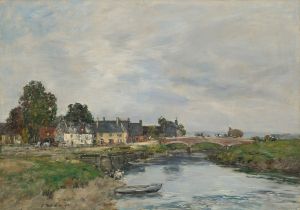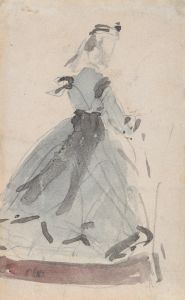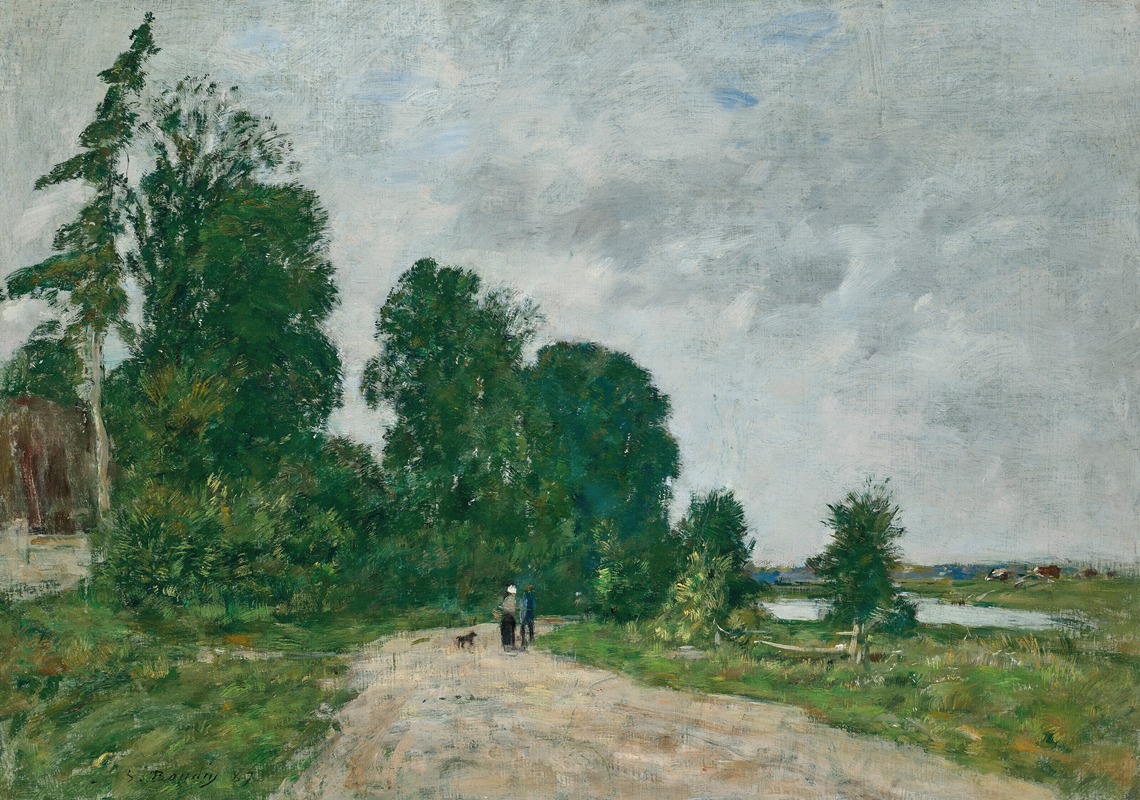
Chemin animé, bord de rivière
A hand-painted replica of Eugène Boudin’s masterpiece Chemin animé, bord de rivière, meticulously crafted by professional artists to capture the true essence of the original. Each piece is created with museum-quality canvas and rare mineral pigments, carefully painted by experienced artists with delicate brushstrokes and rich, layered colors to perfectly recreate the texture of the original artwork. Unlike machine-printed reproductions, this hand-painted version brings the painting to life, infused with the artist’s emotions and skill in every stroke. Whether for personal collection or home decoration, it instantly elevates the artistic atmosphere of any space.
Eugène Boudin, a prominent French painter, is widely recognized for his significant contributions to the development of landscape painting in the 19th century. Born in 1824 in Honfleur, France, Boudin was one of the earliest French landscape painters to paint en plein air, or outdoors, which was a practice that greatly influenced the Impressionist movement. His works are celebrated for their vibrant depiction of natural light and atmospheric effects.
One of Boudin's notable works is "Chemin animé, bord de rivière," which translates to "Animated Path, Riverbank." This painting exemplifies Boudin's skill in capturing the transient effects of light and weather, a hallmark of his artistic style. Although specific details about the creation date and the exact location depicted in this painting are not widely documented, it is consistent with Boudin's thematic focus on nature and everyday life.
In "Chemin animé, bord de rivière," Boudin employs his characteristic loose brushwork and a delicate palette to convey the serene yet dynamic atmosphere of a riverbank scene. The painting likely features a path bustling with activity, set against the backdrop of a tranquil river, capturing the interplay between human presence and the natural environment. Boudin's ability to depict the subtleties of light reflecting off the water and filtering through the foliage is evident, showcasing his mastery in rendering atmospheric conditions.
Boudin's work is often associated with the Barbizon School and the Impressionists, although he maintained a distinct style that was more focused on the effects of light and atmosphere than on the fleeting moments of modern life that characterized much of Impressionist art. His influence on the Impressionists, particularly Claude Monet, is well-documented. Monet himself acknowledged Boudin's impact on his development as an artist, especially in encouraging him to paint outdoors and observe the changing qualities of light.
"Chemin animé, bord de rivière" reflects Boudin's dedication to capturing the essence of the natural world. His paintings are not merely representations of landscapes but are imbued with a sense of immediacy and vitality. Boudin's ability to convey the mood of a scene through his nuanced use of color and light has earned him a lasting place in art history.
Today, Eugène Boudin's works are held in high esteem and can be found in major museums and collections around the world, including the Musée d'Orsay in Paris and the National Gallery of Art in Washington, D.C. His paintings continue to be studied and admired for their pioneering approach to landscape painting and their influence on subsequent generations of artists.
In summary, "Chemin animé, bord de rivière" is a testament to Eugène Boudin's artistic vision and his role as a precursor to the Impressionist movement. Through his innovative techniques and keen observation of nature, Boudin has left an indelible mark on the art world, inspiring countless artists to explore the beauty and complexity of the natural landscape.





